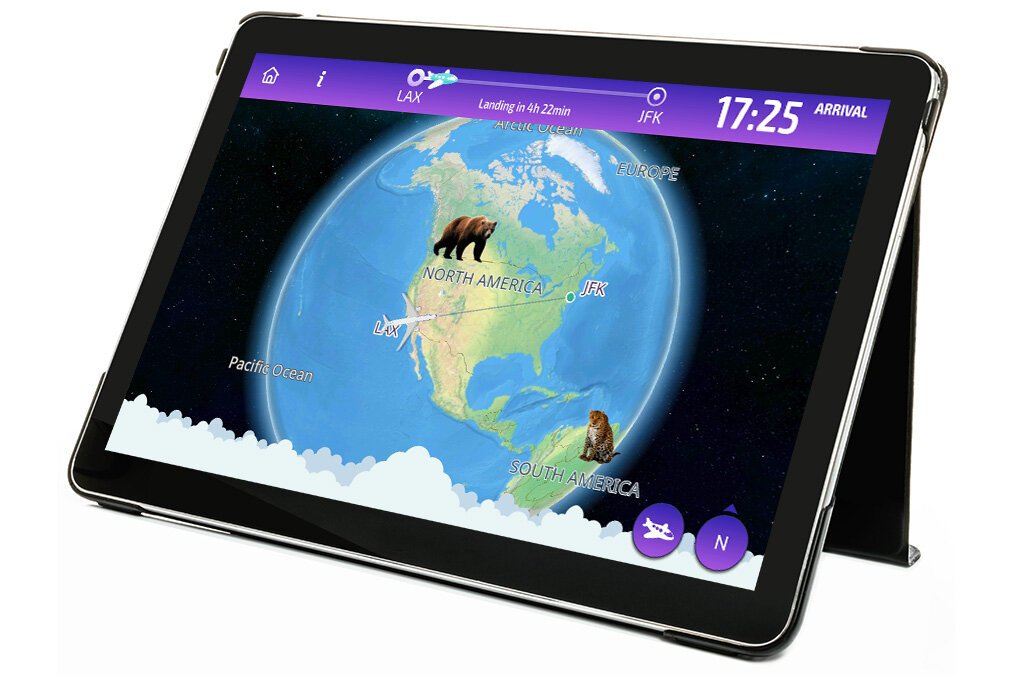Inflight Online: Connecting The Dots
The in-flight moving map has transformed over the years from a simple journey-tracker to a resource for rich content, entertainment and even education, particularly when it comes to catering for younger passengers. Kimberley Young tracks the pioneering suppliers that are mapping the way ahead.
Interactive Learning
Map provider FlightPath3D has offered a Kids Map since 2014. It features interactive 3D animals (the only one to do so, the company says) as well as geographical information and landmarks.
“The map remains the most watched piece of content displaying on any IFE system,” FlightPath3D’s Vice-President of Marketing, Jon Norris, explains. “The kids map development was sparked by our desire to provide rich and entertaining ‘geotainment’ content to children and to show how our platform can deliver both standard and customised themed-map services, using a similar content update process to that used to deliver movies, TV programming and music to IFE systems.”
The Kids Map is currently flying on a long list of airlines including Air Canada, El Al and Norwegian, to name just a few, and several new customers have also selected the map for deployment in early 2020.
“The volume of information displayed on the map has been simplified and optimised to aid children’s learning about different countries, continents, their location relative to each other, large bodies of water (seas and oceans) as well as the animals of course,” Norris tells Inflight. “It really is all about entertaining and teaching children through play.”
The map is available on seatback IFE screens and FlightPath3D expects it is a service that children will likely “access intermittently throughout the flight” but could also find absorbing enough to hold their interest from take-off to landing.
Recent months have seen new entrants to the map market and discussions of new child oriented map platforms. Norris comments: “We see that there are other providers launching a children’s map five years plus after we did, and I believe that this is just a delayed reaction to the growing need to provide a richer, deeper experience to all passengers, not just adults.
“In parallel, over the past 2–3 years there has been an exponential increase in location based services, geo-tagging, experiential travel and social media-hyped locations that is driving an increasing appetite for map-based services.”
This boost in demand for location-based services could suggest why map providers are looking to meet new requirements from travelers, particularly as demographics evolve.
This article was originally posted on Inflight Online here.

